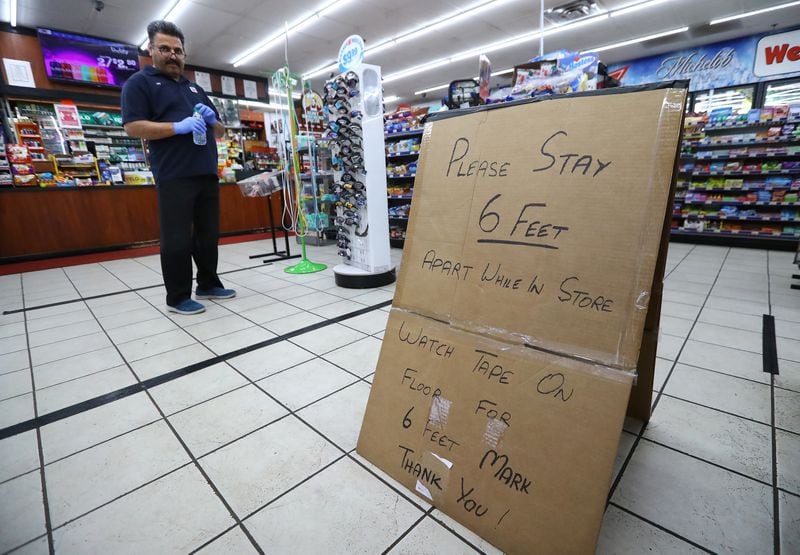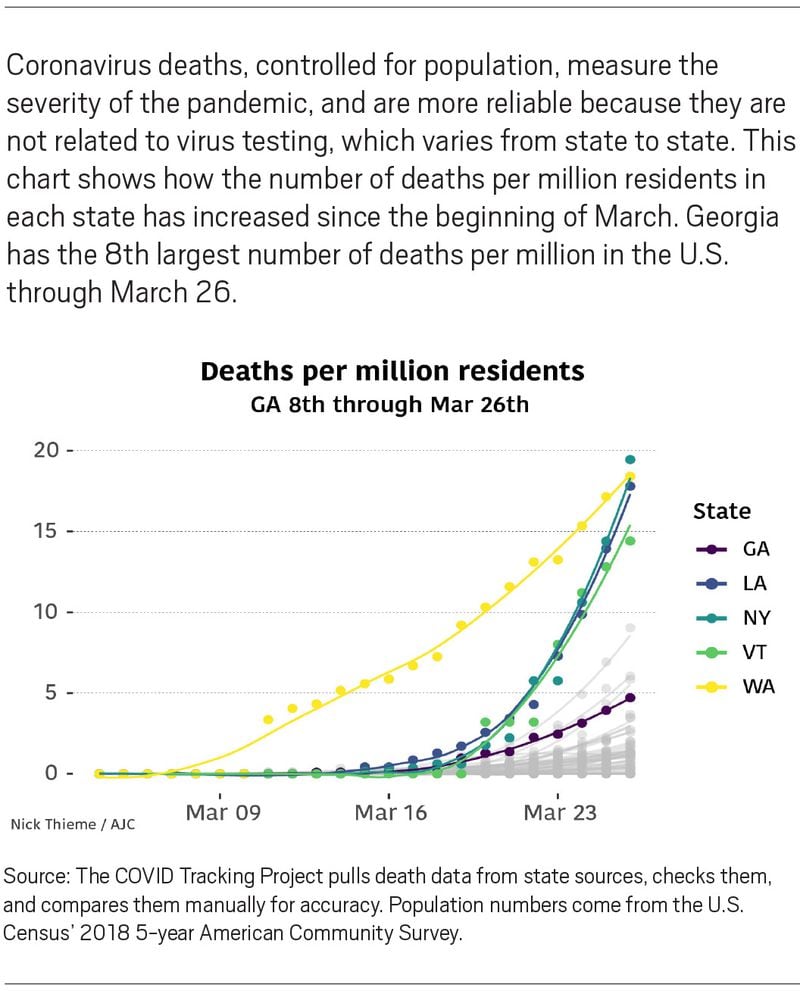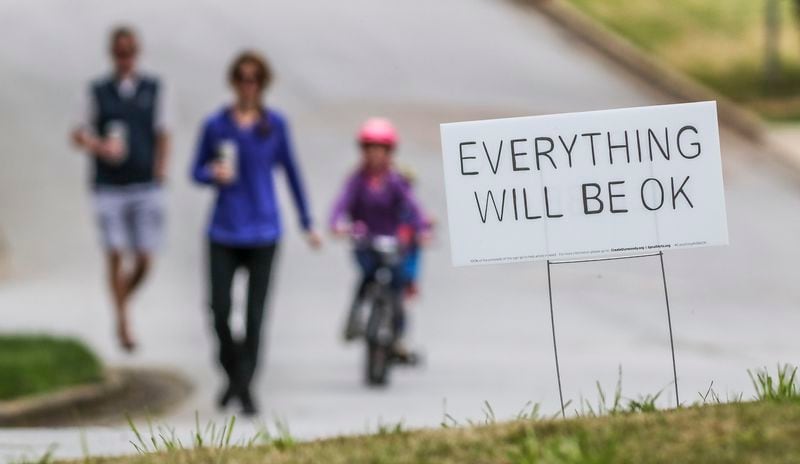Georgia is under a particularly brutal siege from the novel coronavirus, a situation unlikely to end for weeks, or even longer.
Only five states have reported more deaths than Georgia from COVID-19, the disease caused by the coronavirus, according to the latest available data. And even though the state has tested only the sickest patients, excluding those who exhibit no severe symptoms of the disease, Georgia still ranks 10th nationally in confirmed cases.
A greater percentage of Georgians who test positive for the virus go on to die than residents of all but a handful of other states, although that may be another reflection of the relative scarcity of tests performed statewide.
The number of confirmed cases in Georgia reached 1,643 on Thursday, a staggering increase of 472% in one week. The state Department of Public Health said 56 Georgians had died from the virus as of late Thursday. A week ago, deaths totaled 10.
As the grim news continued, Gov. Brian Kemp ordered all schools to remain closed through at least April 24. By then, all students will have been out of classrooms for six weeks, some for even longer. An executive order that Kemp signed Thursday gives school districts the option of resuming classes on April 27. But Kemp indicated he could extend the closure if the pandemic crisis worsens.
Kemp appeared on a town hall meeting broadcast statewide Thursday evening. Earlier this week, in an effort to slow the virus’ spread, he ordered bars and nightclubs to close and banned public gatherings of 10 or more people unless they practiced adequate social distancing. He has resisted calls to impose a statewide lockdown on business activity, a social-distancing measure that many experts say is key to containing the virus.
» AJC COMPLETE COVERAGE: CORONAVIRUS IN GEORGIA
Another indicator of the outbreak’s lingering grip on the state came as officials reported Thursday that 12,140 Georgians filed for unemployment insurance in the week ending March 21. That number more than doubled the previous week’s claims and is expected to increase even further as businesses close or cut back services to help curb the spread of the virus. Nationally, about 3.3 million people filed unemployment claims — four times the record for a single week.
In Georgia, the ferocity with which the coronavirus seems to be striking has been exacerbated by the state’s long-neglected public health crisis, experts said Thursday.
Georgia has among the highest incidences of diabetes, hypertension, obesity and strokes, particularly in areas with high poverty rates. The cluster of coronavirus cases in southwest Georgia, particularly in the counties surrounding Albany, may reflect those trends.
“Our population in general is sicker,” said Dr. Harry J. Heiman, a clinical associate professor at Georgia State University’s School of Public Health. The risk of serious illness or death from the coronavirus is greater in Georgia, he said, “just because our population is less healthy to start with.”
The virus is killing a higher proportion of Georgians than it is residents of all but seven other states, according to an Atlanta Journal-Constitution analysis of data collected from states by the COVID Tracking Project.
Georgia’s death rate is 4.7 for every 1 million residents, the newspaper’s analysis showed.
“Deaths that we’re observing today are from infections that might have occurred up to a month ago,” said Dr. Benjamin Lopman, a professor of epidemiology at Emory University’s Rollins School of Public Health. “The variation (in death rates) between states tell us that the epidemic is at a different stage in different parts of the country.”
The highest death rate — 19.4 for every 1 million residents — is in New York, considered the epicenter of the coronavirus outbreak in the United States. Washington state, where the outbreak swept through senior care facilities and accounted for most of the nation’s first fatalities from the virus, has a death rate of 18.4, followed by Louisiana’s 17.8.
Georgia State’s Heiman said that deaths per capita give a skewed picture that diminishes the severity of the outbreak among vulnerable populations, such as the sick and the elderly, or in regions with an unusually high number of infections.
A more significant measurement, he said, would be the rate of death among people infected with the virus — a statistic that may be out of reach.
“In the absence of widespread testing, we don’t know how many people have been affected,” Heiman said. “We’ve barely begun to test in Georgia. So we don’t know.”
About 3.4% of Georgians who have tested positive have died, a greater proportion than in any states except Washington and Louisiana. In New York, 1% of confirmed cases have resulted in deaths.
Neither Heiman nor Lopman expect Georgia’s trends to reverse soon.
“We know for certain this is the tip of the iceberg,” Heiman said. “The only way to slow down and change the trajectory of this epidemic is aggressive public health action.”
Drastic measures are key because, unlike with a seasonal flu, individuals have not developed immunities to the coronavirus.
“This virus basically entered a totally susceptible population,” Lopman said. “No one had been exposed to the coronavirus before. The entire population is susceptible. What we’re seeing right now is really just the beginning of this epidemic, if we don’t act now. We could be seeing this growth in the death rates for weeks or months to come.”
About the Author









